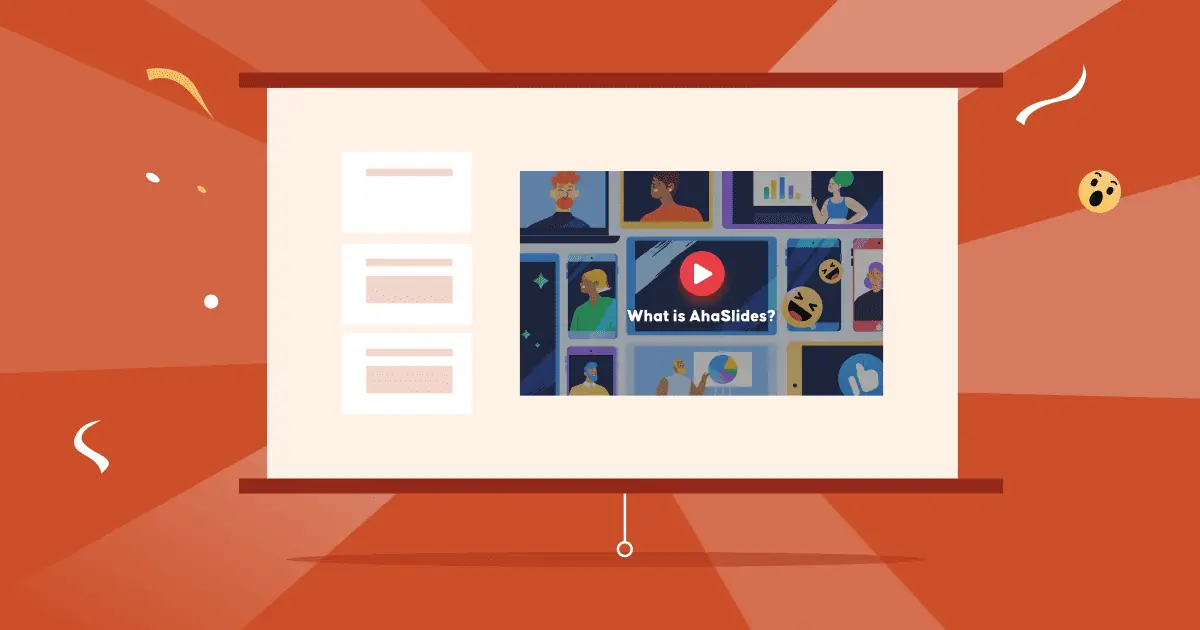初學者如何辯論? 爭論是個大話題。如果你以前從未吵過架,想想接下來會發生什麼,以及如何避免在眾人面前顯得一頭霧水,你可能會不知所措。
在你鼓起勇氣站上講台之前,還有很多東西要學習。不過別擔心;這份辯論新手指南將提供你在下一場辯論中脫穎而出所需的步驟、技巧和範例。那麼,就讓我們來看看這些精彩的辯論技巧吧!
目錄
AhaSlides 的更多提示
初學者辯論如何運作(分 7 個步驟)
在學習如何像專業人士一樣闡述你的論點之前,你需要了解初學者辯論的運作方式。看看這七個新手辯論步驟以及你需要做的準備,你就能完全理解如何成為一個更優秀的辯手!
1. 目的確定

由於辯論可以在許多場合和場合進行,例如學校、公司會議、小組討論或政治機構,因此首先確定辯論的主要目的至關重要。這可以清晰地規劃和組織辯論,因為之後還有很多細節需要處理,所有這些細節都需要協調一致。
因此,首先,主持人會回答這個問題—— 這場辯論的目標是什麼?
例如,如果你在一個 學生辯論目標應該與你的課程一致,可以是鼓勵學生的批判性思考和公開演講技能。如果是在工作中,可以決定採用兩種方案中的哪一種。
2.結構選擇
要辯論得好,你需要有一個框架。辯論的結構有很多變種,其中也包含多種格式。在準備辯論之前,了解一些常見辯論類型中使用的基本術語非常重要…
- 應用主題 – 每場辯論都有一個主題,正式名稱為 議案 or 解析度。主題可以是一個聲明、一項政策或一個想法,這取決於辯論的背景和目的。
- 二 隊 - 肯定 (支持動議)和 負 (反對動議)。 在許多情況下,每個團隊由三名成員組成。
- 評委 or 審裁官: 在辯論者的證據和表現中判斷論點質量的人。
- 計時員 – 負責記錄時間並在時間到時停止團隊活動的人。
- 觀察員 – 辯論中可以有觀察員(觀眾),但不允許插話。
對於初學者辯論,收到動議後,團隊將有時間準備。 這 肯定 小組從他們的第一位發言者開始辯論,隨後是第一個發言者 負 團隊。 然後它轉到第二個揚聲器 肯定 團隊,回到第二位演講者 負 團隊等等。
每位發言者將在辯論規則規定的規定時間內發言並陳述他們的觀點。 請記住,不是 全部 辯論以團隊結束 負; 有時,團隊 肯定 將被要求完成。
由於你可能對此還不熟悉,你可以找到適合初學者的辯論流程 下面。它很容易理解,並且可以用於許多不同類型的辯論。
3. 制定辯論計劃
為了使辯論順利進行,主持人將製定一個計劃 盡可能詳細。他們應該讓你知道這個計劃,因為它將有助於形象化一切,並防止你偏離軌道,這在你參加初學者辯論時非常容易做到。
以下是一份計劃應包含內容的簡單清單:
- 辯論的目的
- 結構
- 房間將如何佈置
- 每個時期的時間線和時間
- 正式辯論規則以及對演講者和評判員的說明
- 筆記模板 對於角色
- 辯論結束時結束辯論的摘要
4. 房間佈置
環境對於辯論至關重要,因為它會在一定程度上影響演講者的表現。
你的辯論應該盡可能營造專業的氛圍。佈置辯論室的方法有很多,但無論選擇哪種佈置,最終都會以中間的「發言區」為中心。這裡正是辯論的精彩之處。
代表兩隊的每位發言者輪流站在發言區,結束後回到座位上。
下面是一個 流行的佈局示例 對於初學者辯論:
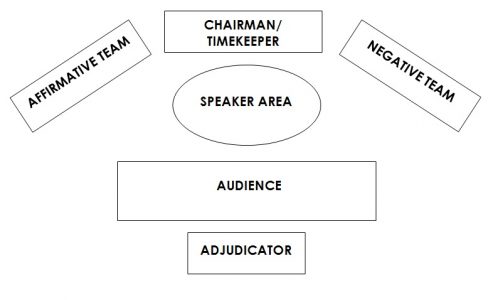
當然,你也可以選擇在線上進行辯論。你可能很難在新手線上辯論中感受到同樣的氛圍,但有一些方法可以讓它更有趣:
- 背景定制: 每個角色可能有不同的 Zoom 背景:主持人、計時員、裁判員和每個團隊。 這有助於區分每個參與者的角色,並激發對所給角色的自豪感。
- 配套設備:
- 計時器: 時間在辯論中很重要,尤其是對於第一次出局的新手。 您的輔導員可能會決定使用屏幕計時器來跟踪您的步速(儘管在大多數辯論中,計時員只會在還剩 1 分鐘或 30 秒時發出信號)。
- 聲音特效: 請記住,這只是針對初學者的辯論。 您可以期待您的輔導員透過鼓勵來緩和氣氛 鼓掌音效 當演講者結束演講時。
5. 球隊被選中
球隊將分為 肯定 負. 通常,這些團隊中的團隊和演講者的位置是隨機的,因此您的輔導員可以使用 轉輪 使整個過程更加激動人心和引人入勝。
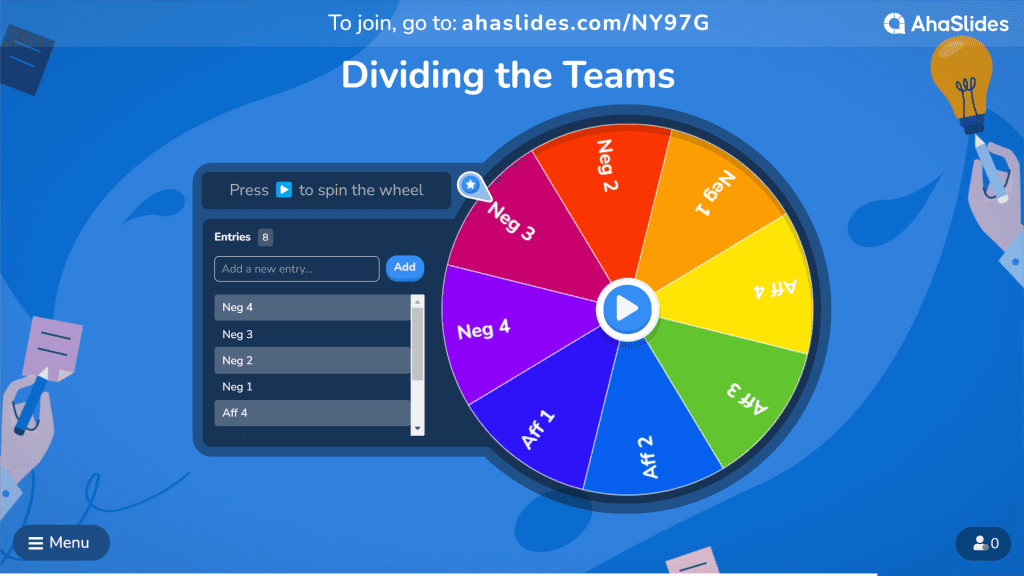
選定兩隊後,將會宣布議案,並給您一些時間準備,最好是一小時。
在這個時候,主持人會指出很多不同的資源,這樣團隊就可以了解上下文和問題,從而提出更強有力的觀點。 你知道的越多,辯論就越激烈。
6. 辯論開始
每種不同類型的辯論都需要不同的形式,並且可能有很多變化。 以下是一個非常流行的版本,可以用於初學者的任何辯論。
本次辯論每隊有四輪發言機會,因此最好有6到8位發言者。如果是6人發言,則兩位辯手將發言兩次。
| 發言 | 時間 | 辯手的責任 |
| 第一肯定建設性 | 8分鐘 | 介紹運動及其觀點 給出他們對關鍵術語的定義 提出他們的論點以支持該動議 |
| 第一負建設性 | 8分鐘 | 陳述他們反對該動議的論據 |
| 2 肯定建設性 | 8分鐘 | 進一步闡述支持該動議和團隊意見的論點 識別衝突區域 回答否定者的問題(如果有的話) |
| 2負建設性 | 8分鐘 | 進一步闡述反對該動議的論點,並增強團隊的意見 識別衝突區域 回答肯定發言者的問題(如果有) |
| 第一次否定反駁 | 4分鐘 | 保衛 負 團隊的論點,並在不添加新論點或資訊的情況下駁斥支持論點 |
| 第一次肯定反駁 | 4分鐘 | 保衛 肯定 團隊的論點,並在不添加新論點或資訊的情況下駁斥對方的論點 |
| 第二次否定反駁 (結束語) | 4分鐘 | 進行第二次反駁和結束陳述 |
| 第二次肯定反駁 (結束語) | 4分鐘 | 進行第二次反駁和結束陳述 |
💡 根據規則,在反駁之前可能有很短的準備時間。
您可以看到這種格式的視頻示例 在這裡.
7.判斷辯論
現在是評審開始工作的時間了。他們需要觀察每位辯手的辯論和表現,然後進行評估。以下是他們將根據你的表現來評判的一些方面…
- 組織和清晰度 – 您的演講架構 – 依照您的方式來安排是否合理?
- 內容 – 您提出的論點、證據、交叉質詢和反駁。
- 交付和演示風格 – 如何表達您的觀點,包括口語和肢體語言、眼神內容和使用的語氣。
給新辯手的 10 個技巧
沒有人能從一開始就掌握所有東西,如果你從未辯論過,開始做事情並不容易。以下是 10 個快速提示 探索如何有效地進行辯論,並在每次辯論中與新手保持一致。
#1 - 準備是關鍵 – 研究主題 很多 事先不僅要獲得背景訊息,還要獲得信心。 這可以幫助新手辯手更好地理解問題,成為良好的反駁起始者,然後起草他們的論點,找到證據,並避免陷入困境。 每個辯手都應該用分來概述所有內容(最好是 3 個論點 3 個分),以便更好地整理想法並了解其演講的「大局」。
#2 - 讓一切都圍繞主題 – 辯論的一大筆敗筆在於偏離主題,因為它會浪費寶貴的發言時間,削弱論點。注意提綱和要點,確保它們緊扣主題,並切中要點。
#3 - 用例子說明你的觀點 – 舉例子會讓你的辯論語句更有說服力,人們也能更清楚地看到事情,例如 Free Introduction 下面的例子…
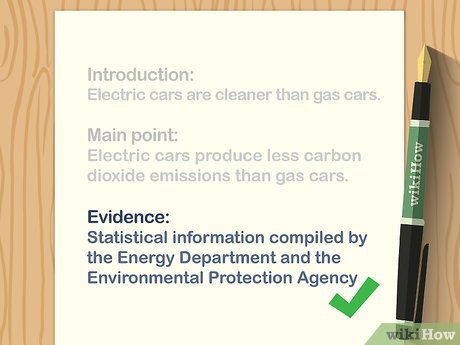
#4 - 試著像對手一樣思考 在修改觀點時,思考對方可能提出的觀點。找出一些,並寫下心智圖,列出對方可能提出的反駁。 do 最終提出這些觀點。
#5 - 有一個強有力的結論 用幾句好話結束辯論,至少能概括重點。很多時候,辯手喜歡用一句詩意的句子來結束辯論,以此來增強辯論的力道。 麥克風掉落 片刻 (查看下面的示例).
#6 - 要有信心(或假裝它直到你成功!) – 如何在辯論中表現得更好,最重要的一點就是營造氣氛。辯手需要對自己的發言充滿自信,因為自信的氣勢對評審和旁觀者有很大的影響力。當然,準備得越充分,你就越有自信。
#7 - 慢慢地說 – 新手辯手的常見問題是語速。通常情況下,第一次發言時,語速會過快,導致聽眾和辯手都感到焦慮。深吸一口氣,放慢語速。你可能說得少一些,但最終的發言會很有分量。
#8 - 用你的身體和臉 – 肢體語言可以支持你的觀點並展現自信。注視對手的眼睛,保持良好的站姿,並控制面部表情(不要過於激進),以吸引他們的注意力。
#9 - 仔細聽並做筆記 – 辯手必須留意每一次發言和每個觀點,以便跟上節奏,支持隊友,並更好地反駁對手。做好筆記會很有幫助,因為沒有人能夠記住所有要點,以便反駁或進一步闡述。記住只記下關鍵點。
#10 - 避免廉價拍攝 – 專注於並反駁對手的論點,而不是對手本身。任何辯論者都不應冒犯他人;這會顯得缺乏專業素養,而且你肯定會因此被扣分。
6種風格的初學者辯論
辯論有多種風格,有不同的形式和規則。 徹底了解其中一些可以幫助初學者了解辯論的過程以及他們需要做什麼。 以下是您在第一次辯論中可能會看到的一些常見辯論風格!
1. 政策辯論 – 這是一種常見的情況,需要大量的研究。爭論圍繞著是否要製定某項政策展開,通常由兩人或多人組成的團隊進行。 政策辯論 在許多學校中被採用,因為它很實用,而且規則比其他類型的規則更容易遵守。
2. 議會辯論 – 這種辯論風格源自於英國政府模式和英國議會辯論。最初由英國大學採用,如今已成為世界大學生辯論錦標賽和歐洲大學辯論錦標賽等許多大型辯論比賽的官方辯論風格。這種辯論比傳統的辯論更詼諧幽默,且更簡短。 政策 辯論,使其適用於從中學到大學的許多案例。
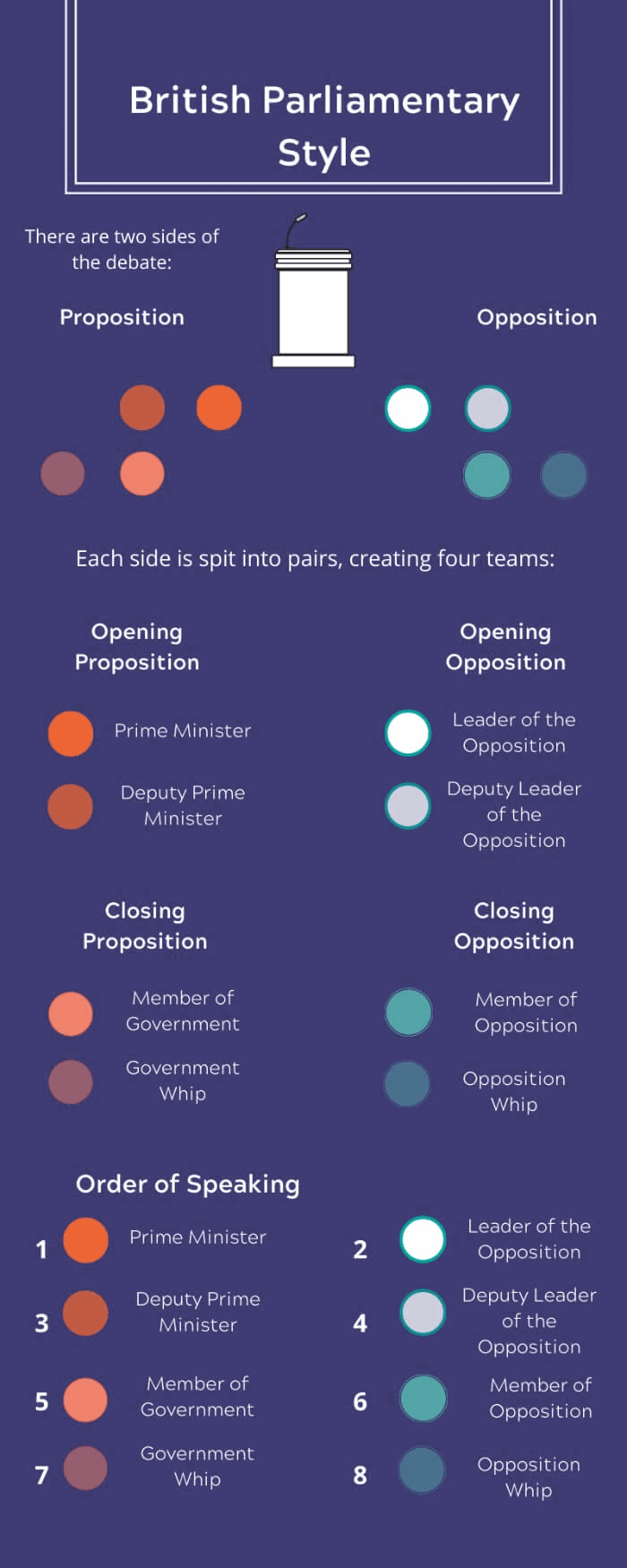
3. 公共論壇辯論 – 這種類型的辯論會由兩隊就一些「熱門」且有爭議的話題或時事問題進行辯論。這些主題往往是你本來就已有看法的,所以這種類型的辯論比 政策 辯論。
4. 林肯道格拉斯 辯論– 這是一種開放式的一對一辯論風格,以1858年美國參議員候選人亞伯拉罕·林肯和斯蒂芬·道格拉斯之間著名的一系列辯論命名。在這種風格中,辯手們會關注更深刻或更具哲學性的問題,主要圍繞在一些重大議題上。
5. 自發 論證 – 兩位辯手就一個特定話題展開辯論;他們需要在極短的時間內構思論點,並在沒有太多準備的情況下迅速回應對手的觀點。這需要強大的辯論技巧,有助於增強自信心,克服怯場心理。
6. 國會 辯論 – 這種模式模擬了美國立法機構,辯論者模擬國會議員。他們就立法內容進行辯論,包括法案(擬議法律)和決議(立場聲明)。然後,模擬國會投票通過法律,並繼續投票贊成或反對該立法。
2個辯論例子
這裡我們列舉了兩個辯論的例子,以便您更了解它們是如何發生的…
1. 英國議會辯論
這是英國前首相梅伊與前工黨領袖傑瑞米柯賓辯論的短片。這場辯論的活躍氣氛和激烈的爭論正是這類激烈辯論的典型特徵。此外,梅在演講結束時發表瞭如此強硬的言論,甚至在網路上爆紅!
2.辯手
學生辯論 在校園裡,辯論正日益成為一種流行現象;一些精彩的辯論甚至能與成年人的辯論媲美。這段影片是越南語英語辯論節目《辯論者》的一集。這些高中生以相當常見的三對三形式就「我們為格蕾塔·通貝裡鼓掌」的議案展開辯論。






